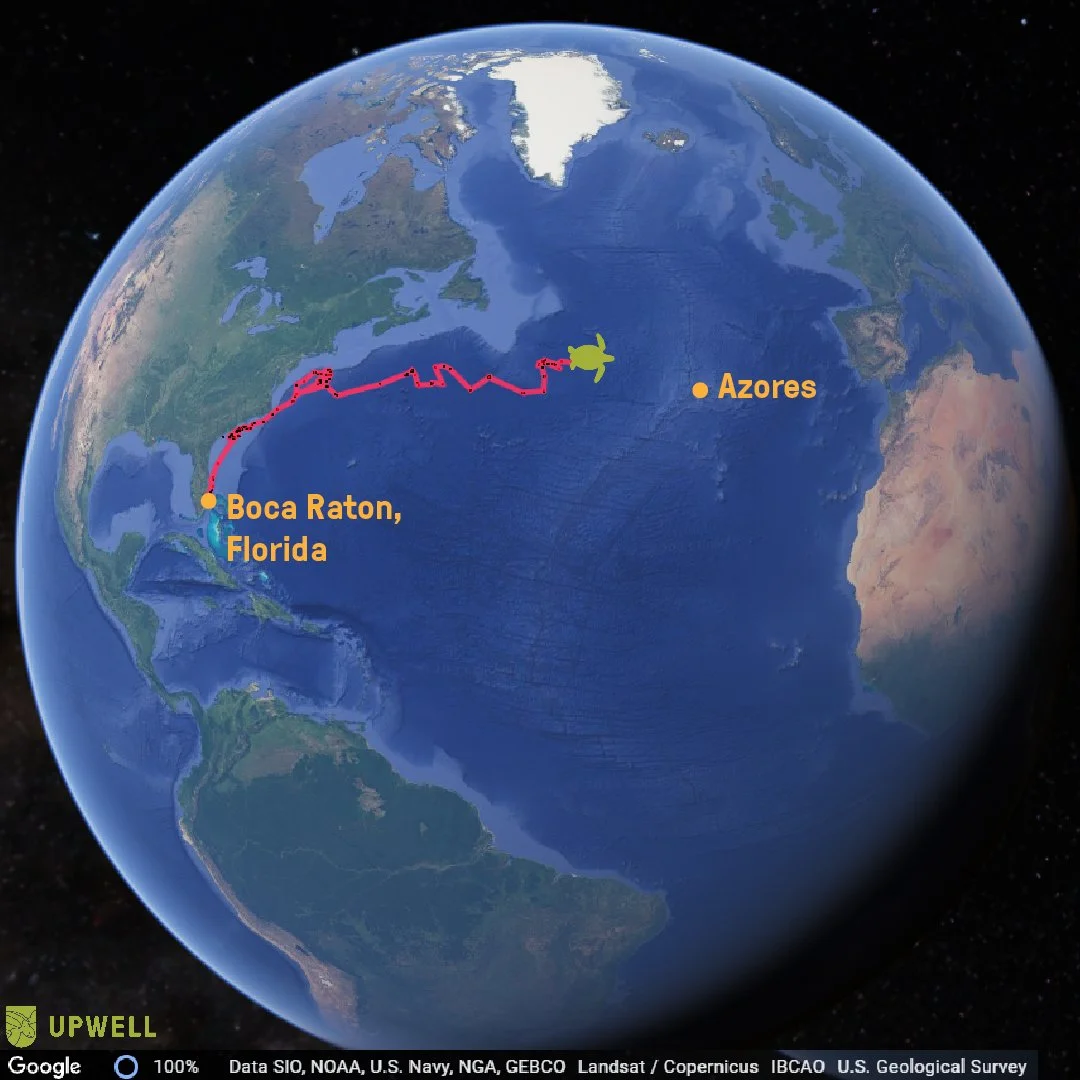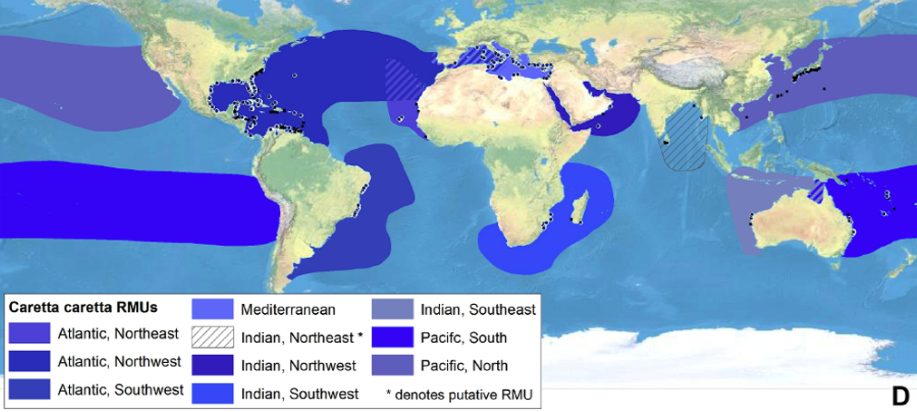This blog post is the fourth in a series about Ember the juvenile loggerhead. If you have not done so already, we suggest checking out our first, second, and third posts which cover Ember’s rescue and rehabilitation and movement out into the Atlantic Ocean. If you are all caught up, keep reading for the final installment in our series on Ember!
After 136 days and approximately 1,730 miles, Ember’s prototype tag stopped transmitting on March 13th— far outlasting its 80-day expected duration. When a tag stops transmitting, it is simply the end of the tag, and does not indicate a threat to the turtle’s wellbeing. While it is possible that a predator or anthropogenic (human-created) threat like fishing gear or vessel traffic impacted the tag, there are many other possibilities including the growth of Ember’s carapace destabilizing the tag adhesive causing the tag to naturally shed, accumulation of microorganisms like algae on the tag, and other technical issues we have not yet found methods to detect.
Unfortunately, there’s no real way for us to know what happened to the tag. Tony Candela, Upwell’s Oceanographic Researcher in residence at Mercator Ocean International, has been processing the data from Ember’s tag since the turtle’s release in October 2022. He summed up the situation saying, “The observable part of Ember’s journey has come to an end.”
Even though we can no longer observe Ember’s location, it is very likely that Ember will head towards oceanic habitats surrounding the Azores archipelago (shown as a yellow dot on the map above) which is only 742 miles away from the last position transmitted. Ember’s tracking data confirms and adds to a growing body of research on the loggerhead’s Lost Years that researcher Dr. Archie Carr started in the 80’s. Ember’s journey closely followed the trajectories of other tagged juvenile loggerheads released in Florida that were both captive reared and tagged in the wild.
Photos of Ember at arrival (left) and after rehabilitation at the Georgia Sea Turtle Center (center) and release by the Gumbo Limbo Coastal Stewards (right)
Before being released last October, Ember had only known the safety and comfort of the Georgia Sea Turtle Center (GSTC) rehabilitation facility. The tracking data appears to indicate that being a captive-reared juvenile with no oceanic experience did not impact Ember’s ability to survive in the ocean.
Davide Zailo, Research Program Manager at the GSTC reflects, “It is rewarding to see in near real-time Ember’s transition from an Ambassador Animal at the GSTC to now living a natural life in the open ocean. Who knows, maybe future scientists on Jekyll Island will one day encounter Ember as an adult nesting female contributing to the ongoing recovery of her species.”
Upwell is also leading efforts to pick up where Ember’s journey left off and fill in research gaps around where loggerheads might go during and after their time near the Azores. In 2022, Upwell tagged 24 juvenile loggerhead sea turtles in waters around the archipelago as part of an ongoing study with collaborators at the Okeanos Center of the University of the Azores, COSTA and Aquário do Porto Pim.
Figure 1. Multi-scale Regional Management Units for loggerhead turtles Caretta caretta. D) Regional Management Units (shown with nesting sites). As seen in the article "Regional Management Units for Marine Turtles: A Novel Framework for Prioritizing Conservation and Research across Multiple Scales" by Bryan P. Wallace et al.
Upwell Executive Director George Shillinger also bid Ember a fond farewell and wished the young turtle a safe onward journey. He expressed gratitude to Ember for giving us more insights into the Lost Years and reflected, "The data from Ember's track enhances our understanding about the dispersal and movements of West Atlantic loggerhead turtles from the United States' northern nesting subpopulation, and will help to inform our broader efforts to characterize the distributions and habitats of loggerhead turtles, across their life history, and across the extent of the North Atlantic. This data, in turn, can be applied to management and conservation measures that aim to protect loggerheads within high-use habitats where they are at greatest risk from human threats."
Upwell works to leverage data (like the data from Ember’s tag) to reduce threats that sea turtles face at sea including fisheries bycatch, ship strikes, plastic pollution, and climate change. You can learn more about these threats as well as how you can take action. Thank you to everyone who collaborated to make Ember’s tracking possible, including the Georgia Sea Turtle Center, the Gumbo Limbo Coastal Stewards, and Mercator Ocean International, and to everyone who followed Ember’s story, we are grateful to have been able to share it with you.
Farewell and safe travels, Ember!
Cover photo by Nuno Vasco Rodrigues depicts a loggerhead sea turtle released with a microsatellite tag in the Azores.






